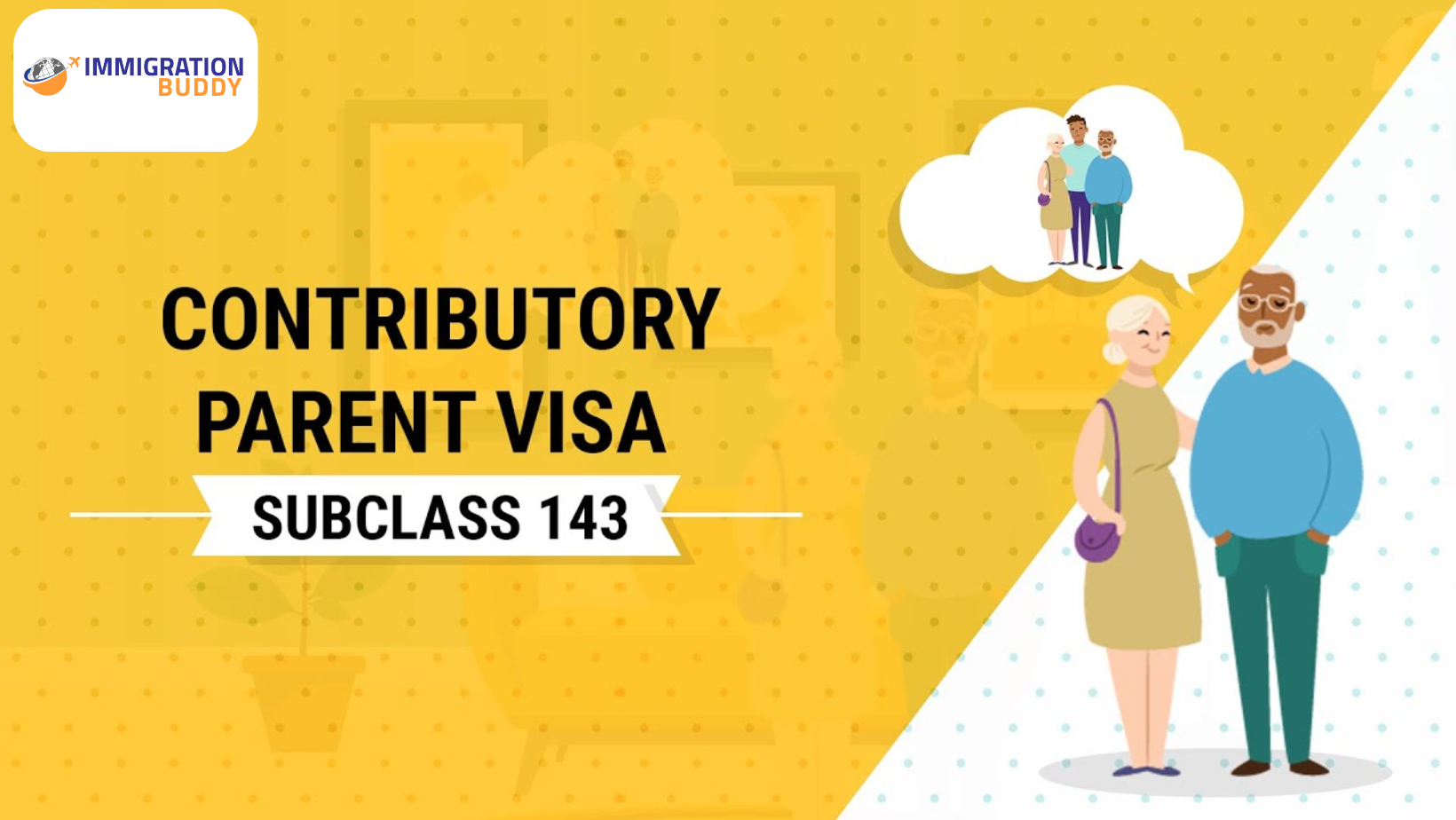Everything You Need to Know About the Parent Visa 143

Strong 8k brings an ultra-HD IPTV experience to your living room and your pocket.
For most families who have loved ones residing overseas, the opportunity to reunite with them for good is a transformational experience. Australia's Parent Visa 143—also referred to as the Contributory Parent Visa 143—is specifically aimed at that goal. It grants parents of settled Australian citizens and permanent residents, or eligible New Zealand citizen,s the option to migrate to Australia on a permanent basis.
But as with all permanent residency options, the procedure is long and has major prerequisites. In this article, we will cover everything you need to know about the 143 Contributory Parent Visa, from the eligibility requirements, benefits, fees, application procedure, and the most frequently asked-about parent visa 143 processing time.
Parent Visa 143: What Is It?
One of the permanent visas granted to Australian parents who wish to come to Australia to be with their kids is Visa Subclass 143. Unlike temporary parent visas, the 143 contributory parent visa grants permanent residence rights, which include the ability to live, work, and access public health services in Australia.
It is classified as "contributory" since applicants are required to pay a considerable fee, which adds to the expense of their potential access to Australian public services. They are rewarded, in turn, by being given a quicker processing timeframe than regular parent visa subclasses, like the Subclass 103.
Why Use the Contributory Parent Visa 143
If you’re considering migrating to Australia to live with your children, the contributory parent visa 143 offers a solid long-term solution. Here’s why it stands out:
- Immediate Permanent Residency: Unlike temporary visas, this visa grants permanent residency from day one.
- Work and Study Rights: Visa holders are free to work and study without restrictions.
- Access to Medicare: Full access to Australia’s public health system.
- Sponsorship Pathway: Allows family-sponsored migration.
- Path to Citizenship: After possessing the visa and fulfilling residence requirements, you may submit an application for Australian citizenship.
Eligibility Criteria for the 143 Contributory Parent Visa
Not everyone is eligible for this visa. The Australian government exercises stringent rules so that only those with valid connections in the country are eligible.
1. Sponsored by an Eligible Child
Your child must:
- Be an Australian citizen, permanent resident, or eligible New Zealand citizen
- Be a resident in Australia (typically for at least two years)
- Be 18 years of age or over
Consent to sponsor you and support you financially
2. Pass the Balance of Family Test
This requirement is to ensure that you have stronger family links to Australia than any other place. You pass the test if:
Half or more of your children reside permanently in Australia, or
More of your children live in Australia than in any other country
3. Health and Character Requirements
You’ll need to pass standard checks, which include:
A medical examination
Police clearance from every country where you’ve lived for more than a year in the past 10 years
4. Assurance of Support (AoS)
Your sponsor or another individual must give an Assurance of Support, a financial undertaking guaranteeing you will not be dependent on government social services upon arrival.
How Much Does the Parent Visa 143 Cost?
The parent visa 143 is one of the higher-cost immigration choices, mostly because of the "contributory" factor. Here's the breakdown:
- Initial application fee: Approximately AUD 4,425
- Second installment: AUD 43,600 per applicant
- Partner or dependent applicant: There are extra charges
The second payment is made on the eve of visa approval, not upon application. Careful planning and budgeting are required, as this is a non-refundable payment.
Grasping the Parent Visa 143 Processing Time
Processing times for the subclass 143 visa are a top priority for families. Although the visa is faster than the normal parent visa, it's still subject to migration caps each year and an increasing queue.
Recent Projections (2025):
- Average processing time: 6 to 8 years
The processing time for the parent visa 143 may vary depending on demand, shifts in immigration policy, and the overall number of positions allotted annually. Updates on processing queues are provided by the government at regular intervals, but unforeseen delays are possible.
If the processing time of less than two years is important, some families initially apply for the Subclass 173 temporary contributory visa (two-year validity) and then move on to the 143 contributory parent visa.
How to Apply for the Visa Subclass 143
Applying for the contributory parent visa 143 is a multi-step process. Here is a simplified step-by-step guide:
Step 1: Confirm Eligibility
Make sure you pass the Balance of Family Test, have an eligible sponsor, and meet health and character criteria.
Step 2: Gather Required Documents
You’ll need:
- Birth and marriage certificates
- Evidence of your relationship with the sponsor
- Police certificates
- Medical reports (as requested)
- Sponsorship forms
Step 3: Submit the Application
Applications must be submitted by mail to the Department of Home Affairs' Parent Visa Processing Centre. Online applications are not yet available for this subclass.
Step 4: Acknowledgement and Queue Placement
After acceptance, your application is placed into the processing queue. You'll be given a queue date, which is very important in determining your position.
Step 5: Pay the Second Installment
When you get to the last processing point, you'll be required to pay the second visa fee.
Step 6: Receive Visa Grant
After approval, you'll be granted permanent residence.
Assurance of Support: What You Should Know
This money guarantee keeps you from having to depend on Social Security. It's a legal, official commitment from your sponsor or another qualified individual.
- Duration: 10 years
- Bond: You must pay a refundable bond (e.g., AUD 10,000 for one applicant)
The funds are refunded after the 10-year AoS period if no social benefits were claimed.
Health Insurance and Medicare Access
Until your 143 contributory parent visa is granted, you won't be covered by Medicare. In this period, you will have to purchase private health insurance to pay for medical costs. When you are granted your visa, you can enroll in Medicare and benefit fully from the public healthcare system of Australia.
Life in Australia on Parent Visa 143
You'll have the following rights as a permanent resident:
- The right to live in Australia indefinitely
- Work and study unlimited
- Access to Medicare and community services
- Ability to sponsor other eligible members of your family
- Right to travel for five years from the date of visa grant (after which you'll require a Resident Return Visa)
Can I Bring My Partner?
Yes. If you are a couple applying, you can put your spouse or partner on the application. They will be deemed a secondary applicant and will have to meet character and health requirements as well. Keep in mind that adding them will add to the application fee.
Drawbacks of the Contributory Parent Visa 143
Although the visa has numerous advantages, it should be noted that its has disadvantages as well:
- Price: The overall fee can range from AUD 90,000 for couples.
- Waiting Period: The lengthy parent visa 143 processing time is emotionally challenging.
- Complexity: The process may be difficult to follow without expertise.
- Health Risk: Older applicants might develop health problems during the extended waiting period.
Due to these issues, most families opt to seek the advice of a registered migration agent.
Final Thoughts
The Visa Subclass 143 offers a convenient, permanent solution for parents who wish to live close to their children in Australia. While the contributory parent visa 143 comes with high costs and lengthy waiting periods, it brings peace of mind and the advantages of permanent residency
If you are weighing this option, early planning is vital. Considering the lengthy parent visa 143 processing time, most families initiate the process several years in advance. Spending in sound advice and preparation can spell the difference between a hassle-free migration and one that is agonizing.
Note: IndiBlogHub features both user-submitted and editorial content. We do not verify third-party contributions. Read our Disclaimer and Privacy Policyfor details.


